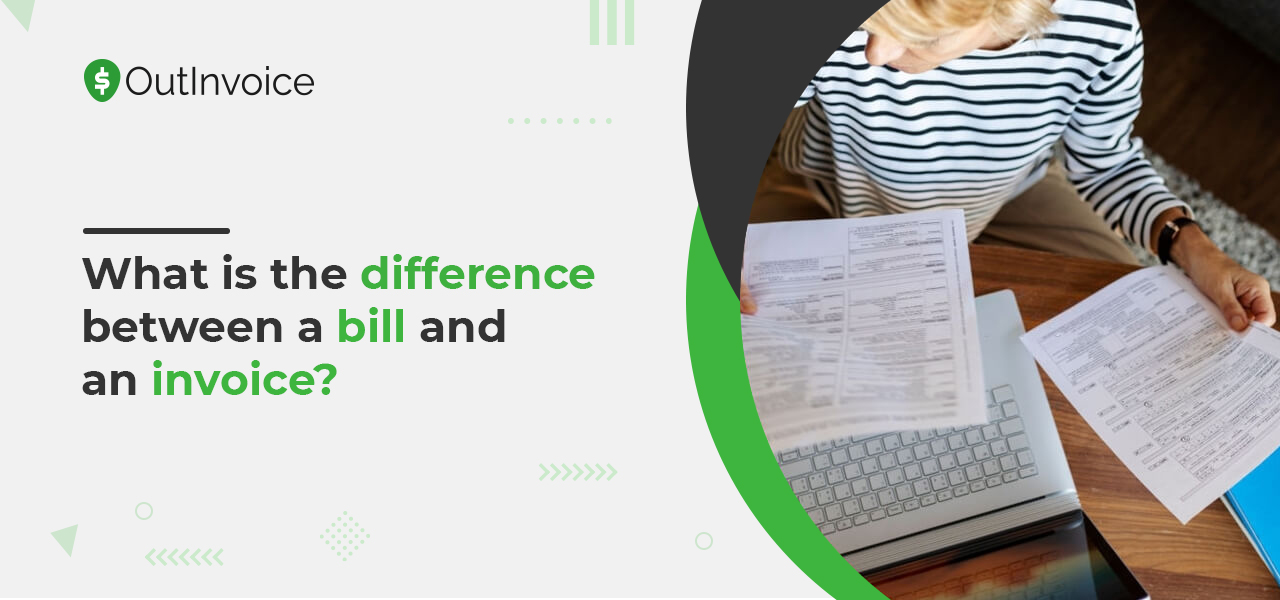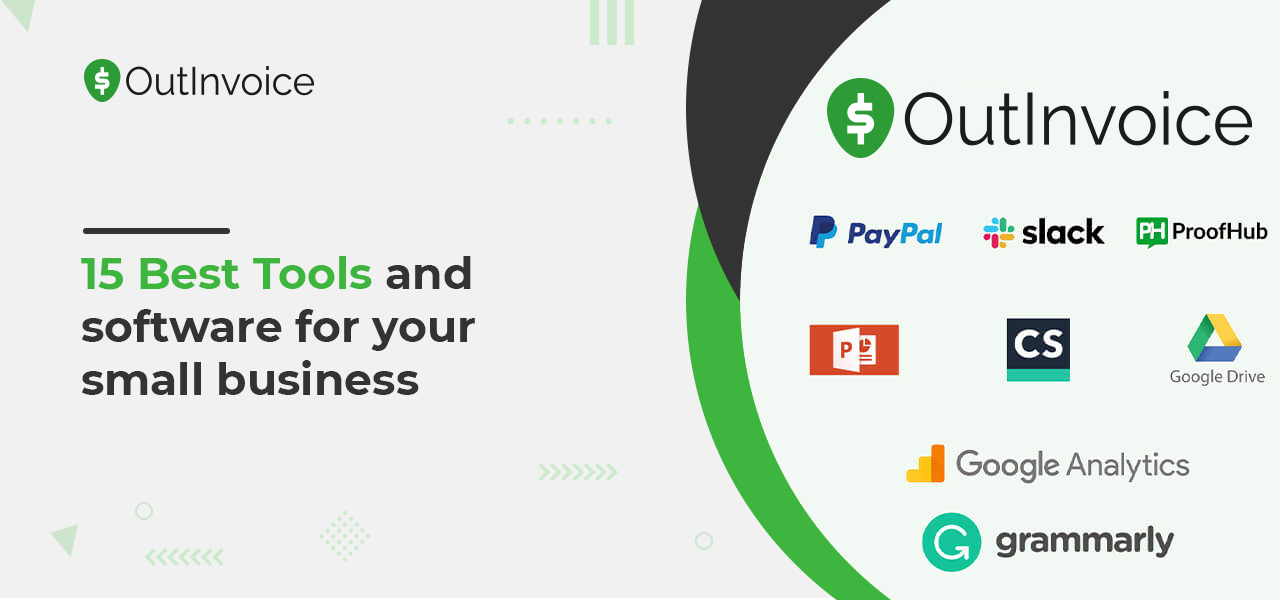
What is the Difference Between a Bill and an Invoice?
Business owners or a company commit not only to their customers or clients but also to develop easy methods with the finances. It can get a bit difficult to understand what’s the difference between invoices and bills and when to use either of them. After all, a single misunderstanding can lead to disaster as it can cause you anything from a minor headache to considerable financial loss.
Let’s take a close look at the clear-cut differentiation between bills and invoices and why it is so important.
Table of Contents
Difference Between Bill And Invoice
Invoice and bill best describe the significance of words and communication. Bills and invoices describe the same thing in a closed manner. So, why use two different words?
“One man’s treasure is another man’s trash.”
“One man’s floor is another man’s ceiling.”
These famous sayings serve to describe most of what we experience in life concerning our viewpoint. The same thing is applicable in accounting, with bills and invoices:
“One man’s bill is another man’s invoice.”
It’s all about the view, and two different people need two different words to communicate on a topic. In the case of business connections, it’s all about having an opinion:
- It makes sure that terms are used and understood by both sides by using invoicing templates.
- It saves the time of communication that might confuse both parties if one did not understand what the other is trying to say.
- It saves time in communications.
By avoiding perplexity and elaborate explanations, “bill” and “invoice” ensure that you and your customers or suppliers can talk productively.

What is an Invoice?
The invoice comes from the French word “envoyer” from the sixteenth century, which means sending or delivering. Doesn’t it make a lot of sense? You mail invoices to your customer because you want them to pay you back.
In short, an invoice is a breakdown of the total amount sent from the seller to the customer for the products or services they provide. The invoice list gives detailed information about the items, cost, deadlines, payment plan, contact details, and total amount to pay.
Practically, an invoice is an enumerated list of by-products sold or services provided, along with the amount of chargeable money for each line item and the total amount of money to be paid. An invoice is sent from the seller to the client in hopes of being paid within a certain given period. The elaborated or detailed invoice document includes dates, address, line items, total amount, VAT, and taxes.
The entire process that vendors apply for generating and sending an invoice for customers or clients is known as the invoicing process. The invoices can also become a legal document if both parties agree with the terms and conditions.
Companies or business owners can create their terms and conditions, provide discounts for early payments, set payment plans, and set a penalty for a late payer. However, if no terms and conditions are set up between the vendor and customers, the customer must pay within 30 days.
Typically, an invoice is sent after the products or services have been provided, and payment is not made yet. In the old school, method invoices were printed and sent through fax or post. Now, the time has changed. This is the era of computer and technology, and an invoice is sent through email in the PDF or Word format is more reliable, cost-effective, convenient, and more eco-friendly as no manpower is required for handling handwritten files. It helps to keep track of unpaid invoices and send a frequent remainder. Advanced invoicing software helps manage administration and account handling.
What are the Different Types of Invoices?
There are various types of definitions based on invoicing definitions. Some of them are listed below:
Standard Sales Invoice
The invoice, which is created by the company and sent to a customer for a sale of their services or merchandise, is called a standard sales invoice. Because of its flexible format, different companies can easily adapt it. This the most common invoice used for the purchase of orders.
Credit Invoice
The process of creating and sending an invoice created by the business to make corrections to the previous calculation errors while purchasing orders, providing a refund to the clients, or giving discounts to their customers. This type of invoice always has a negative amount like -$100.
Commercial Invoice
To make a sale of the products or services internationally, some businesses create a commercial invoice. It includes all the necessary details about the product, transaction, payment methods, payment plan, clearance of shipment on the borders.
Timesheet Invoice
The methods of creating and sending an invoice to the customers on an hourly basis creating payment plans. It includes tasks carried out in an hour, rate per hour, number of hours which is presented in the timesheet, which helps clients with what works and how much they are charged.
Expense Report
It includes all the expenditures like food and hotel, travel costs, phone bills, fuel costs, and other additional expenses. This kind of expense can be directly sent to the client or the company, including payment plans. Overall, it gives the total amount spent.
Pro Forma Invoice
This is the total amount estimation framework, which the company sends to the customers before starting the work. This type of early estimation of bills and invoices helps to understand the total amount of money that needs to be paid when the project is completed. It is also one method to attract a customer by providing complete information about the project and the amount of investment.
Interim Invoice
This is the process of sending an invoice at regular intervals when projects are too long. It becomes difficult to keep track of project expenses. The total amount will be bulk, so Interim Invoices are sent, which helps create a final statement that includes payment plans, contact details, total amount, duration to receive payments to balance the project and maintains an account.
Final Invoice
The total amount was added to the previous receipts’ and sent to the customer at the end of the project. This is the detailed information about project duration, payment plans, cost reduction, the total amount that customers have to pay. You can create it by using invoicing templates.
E-Invoicing(Electronic Invoicing)
An e-invoice is a digital file or a document where data is compressed and sent to particular customers by using invoicing software. No need to enter data manually for any kind of goods or services. Through e-voicing, companies can generate bills and invoices too.
Digital Invoicing
With the help of invoicing software and invoicing systems, companies can generate digital invoices, which can be created in the form of PDF or Word Format.
Best tips for making better Invoices:
- Picking the best billing and invoicing software(take a free trial) which best suited for your companies.
- Use relevant invoice numbers, contact details, discounts, and total amounts to having instant payment.
- Set up payment plans and terms and refund policies to avoid confusion in the later stages.
- Professional and error-free invoicing templates should be used to create better impressions for your clients.
- Use polite gestures by using words like thank you and please like using please to make complete payment within 15 days and also explain payment plans. Thank you for your cooperation.
- Take external help if required to generate and send an invoice, account management, create bills, and collect total amounts.
What is a Bill?
The word bill is derived from the Medieval Latin word “bulla”, which means sealed document. That later was modified into the English word “bill”.
You will pay a bill after the salesperson sends it. Your customer will receive a sealed document if you print the bill and mail it.
A bill is received while an invoice is sent. The customer receives a bill and the company sending an invoice are two complementary things- it’s all about the views.
In general, an invoice means you are demanding money, and a bill means that you need to pay for something. As simple as it is, right? This simple financial terminology allows everyone to understand where their money must go and their commitment toward their suppliers, customers, or businesses and make payment plans.
In practical terms, as a customer or client, a bill is something you must pay. A bill is an enumerated list of by-products sold or services provided, along with the amount of chargeable money for each line item and the total amount of money to be paid. Nevertheless, you would enter it as a bill that you have to pay when you receive an invoice. In other words, a bill is received, whereas an invoice is sent.
Could a Single Document be both a Bill and an Invoice?
When deciding what the difference between a bill and an invoice, it metaphor like the trash vs. treasure is; it depends on your viewpoint. The way to understand is by example: When you sell a product, creating and sending an invoice to the respective person, you can either mail or text her. She will receive the document, and now it’s time to pay the bill. The purpose of invoices and payments of bills is to make payments but different things to the sender and receiver.
What if “bill” and “invoice” are interchangeable? In some ways, they are. For instance, send an invoice to your client for a mat or bill your client for the mat. In both processes, you send a document or file that you want the customer to pay for services.
But we do not use both words when you are talking and paying. You do not say, “I have to pay my invoices today”; instead, you say, “I have to pay my bills today”. It is also somewhat relatable with employers saying I don’t love my job, but it pays bills; no one says it pays invoices.
Since the words bills and invoices are practically indistinguishable, there’s a reason they exist in pairs.
While the words bills and invoices are technically interchangeable, there’s a reason for the existence of two of them. The simplicity of communication that practicing both bills and invoices allows for is not to be miscalculated. Bills and invoices are used for simple administration and accounting purposes to keep everything organized.
It’s truly intelligent to have various terms because it helps define the payment plan and working pattern in your term. Along with a bill and an invoice, a receipt cannot be neglected. The receipt also plays a crucial part in the billing and accounting process.
Receipt
A receipt is distinct from an invoice in that an invoice is appealing for payment of products or services provided, whereas a receipt is a confirmation that the products or services have already been paid for. The payment comes after bills and invoices are sent to clients or customers, whereas after the payment has been made, a receipt is made, and it is the proof that invoices are already paid.
In general understanding, a receipt is a validation of the payment. Recipients make sure that clients got his/her products or services, and it is running well. In the old school, receipts are given in the handwritten note, including signature, while it is given in digital format via mail or text. Customers use it as confirmation of payment. Despite the medium of sending and receiving has been changed but the document common in both cases.
Difference between Invoices, Bills, and Receipts?

So, if you are a business owner or vendor, you would send an invoice after a service has been completed and the total amount is paid, and then you will provide a receipt after you receive the total amount of your invoices. On the other hand, if you are a customer, the invoice you receive is in the form of a bill, and then once you pay the bill, you will receive a receipt as a confirmation of payment is made.
Sending an invoice → Customer receiving it as a bill → Making a Payment → Receipt
The significance of a bill and an invoice is that it documents the by-product sold or services provided, along with the price of each listed item. Invoices are used by the seller and the customer for bookkeeping purposes.
The significance of a receipt is that it provides evidence that the products or services have been paid for, and the business transaction is concluded. The vendor or business owners and the customer can use the receipt as rainproof to pay the amount debited.
Let us consider some bills and invoices, each for different types of services, products, payment plans, and payment agreements or confirmations made between the seller and his client.
If you use old-fashioned methods like handwriting your receipts, you can advance the process by investing in duplicating the paper. Hence providing one to the business owners or seller and another one to the customer or client. Also, make sure to use dark ink for writing as it may get erased and might fade away by natural calamities.
While creating a receipt, ensure vendor and client details, contact details, services, and products details, the amount of transaction, the date of transaction, payment plans, payment types, payment methods, and signature from the seller and client or customer.
As a part of business, you have to make various types of bills and invoices, and receipts. You can create it using different customized invoicing templates or searching for various receipt templates, which can be downloaded online. You can also look for invoice management tips or use invoicing software that helps to fastens the payment plans and process, and it makes sure documents look uniform and professional.
Once you get familiar with invoices, bills and receipts will become habitual to you; and they will help keep your business finances updated, in line, and organized.
Conclusion
To conclude, what the key difference between a bill and an invoice is?
The main point is it depends on who’s talking. In the world of administration, accounting, and transactions, the terms like an invoice, bill, purchase order, statement are used often. And for the general people, all these terms are the same and assume that they refer to the same thing and know the meaning. Bills and invoices are two separate things though they refer to pretty much the same thing. It depends on perception.
The brief answer to this is it depends on who’s doing the talking.



